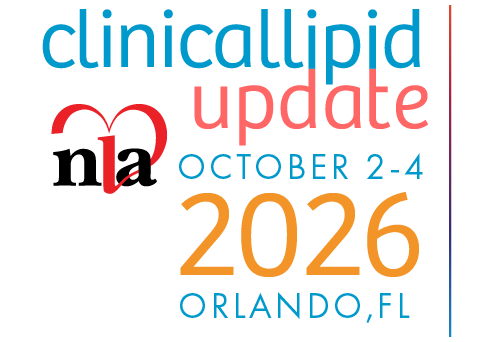Risk assessment tools and lifestyle surveys can play a major role in screening patients for risk of atherosclerotic cardiovascular disease (ASCVD), allowing for early targeted interventions. It is known that race can greatly impact risk, yet it isn’t incorporated in all risk calculators. Similarly, as ethnicity and culture can influence lifestyle, culturally sensitive dietary surveys may better capture eating patterns. Here, we review how current risk scores and lifestyle questionnaires take into account race, ethnicity and culture, as well as their potential use in clinical practice.
The 2013 “ACC/AHA Guideline on the Assessment of Cardiovascular Risk” introduced the Pooled Cohort Equations (PCE) tool that is now available as the ‘ASCVD Risk Estimator Plus’ calculator application by the American College of Cardiology (ACC) It is widely used to estimate both 10-year and lifetime risk of ASCVD. This calculator requires race input, but the options are limited to
‘White’, ‘African American’, and ‘Other’. Importantly, it does note that certain ethnicities (such as South Asian) are considered high-risk and may affect the decision to initiate lipid therapy in patients with borderline or intermediate 10-year risk. Finally, the ‘resource’ section of the app discusses in detail how ASCVD risk varies by ethnicity (for instance, increased ASCVD risk is noted in African American women compared to White counterparts) and how the PCE may under- or overestimate risk in certain ethnicities.(1) Figure 1 shows how risk changes with race when other variables are the same.
To expand on Table 1’s display of risk scores, the Framingham Risk Score (FRS)/adult treatment panel-111 (ATP-111), is one of the most commonly used algorithms for risk assessment, however it was validated in a white population lacking ethnic diversity.(2) The Systematic Coronary Risk evaluation (SCORE) algorithm, used in Europe, divides patients into high or low risk groups based on geographic location, including Eastern Europe and the Middle East.(3) The ASSIGN score, validated and used in Scotland, adds a social deprivation index, family history and smoking quantification to perform slightly better than the FRS in the index population.(4)
The QRISK1/2/3 scores were primarily developed for the British population. The QRISK2 scores added several important factors, including ethnicity. A major limitation is that it was validated on the same population it was derived from, the overwhelming majority of which was White. The QRISK 3 added various medical and psychiatric comorbidities, with ethnicity still included as in the QRISK 2.(5) The Reynolds Risk Score was initially developed for healthy women in the U.S. It was later validated on healthy men to predict 10-year risk of Myocardial Infarction (MI), stroke, or revascularization, and then again validated on female ethnic groups.(6)
Regardless of the choice of risk assessment tool used, they can be easily incorporated into clinical practice with the use of an online website, a smart phone app, or even integrated into the electronic health record where the score will appear if the variables are present within the patient’s chart. If the risk score does not incorporate race, it is important to consider separately the ways that race may influence risk, particularly where that risk may be modifiable.
Assessing risk of heart disease would not be complete without a thorough dietary assessment. Several surveys have been developed to assess healthy eating, adherence to the Mediterranean diet and fat/cholesterol consumption (table 2). Most questionnaires do not assess diet in a culturally specific fashion which may better correlate with one’s true diet. The Mediterranean Diet Score (MDS) was not originally validated in diverse populations, however, a high MDS score has been correlated with improved outcomes when applied to a study population of American Whites and Blacks as seen in the population-based, longitudinal cohort REGARDS (Reasons for Geographic and Racial Differences in Stroke) study of US residents.(8) Ethnic and race specific scores and questionnaires should be further studied since they may more accurately assess ASCVD risk across ethnic groups who are particularly at risk for cardiometabolic disease.
Other questionnaires that are tailored to ethnic and minority groups are available, but their prediction of cardiovascular outcomes has not been evaluated. The Food Behavior Checklist (FBC) was evaluated in a population of 46% African American, 23% Hispanic, and 21% White women.(8) The Sister Talk Food Habits and the Dietary Fat assessment had exclusively female responders (100%and 49% African American women, respectively). Three questionnaires are specifically tailored to the Hispanic population: Spanish translation of the FBC, the Latino Dietary Behaviors Questionnaire, and the Hispanic Fat and Fruit Screener.
Even without a culturally sensitive dietary assessment tool, a clinician can provide examples of foods specific to a patient’s culture to more accurately assess intake. Ideally, a partnership with a registered dietician or nutritionist can allow dedicated time for more open-ended recall techniques that may capture more culturally specific foods. Educational hand-outs such as those created by the NLA (page 48) can also be very useful guiding dietary change.
In summary, the various available risk scores for prediction of cardiovascular events have mostly been validated in white populations and populations that lack ethnic diversity. In addition, most questionnaires do not assess diet in a culturally specific fashion that may better correlate with one’s true diet. Ethnic and race specific scores and questionnaires should be further studied since they may more accurately assess ASCVD risk across ethnic groups who are particularly at risk for cardiometabolic disease.
Disclosure statement:
Dr. Eid has no financial disclosures to report.
Ms. Nahrwold has no financial disclosures to report.
Dr. Dunbar has no financial disclosures to report.
References are listed in the 2021 Fall LipidSpin .pdf on www.lipid.org






.jpg)
.png)

















